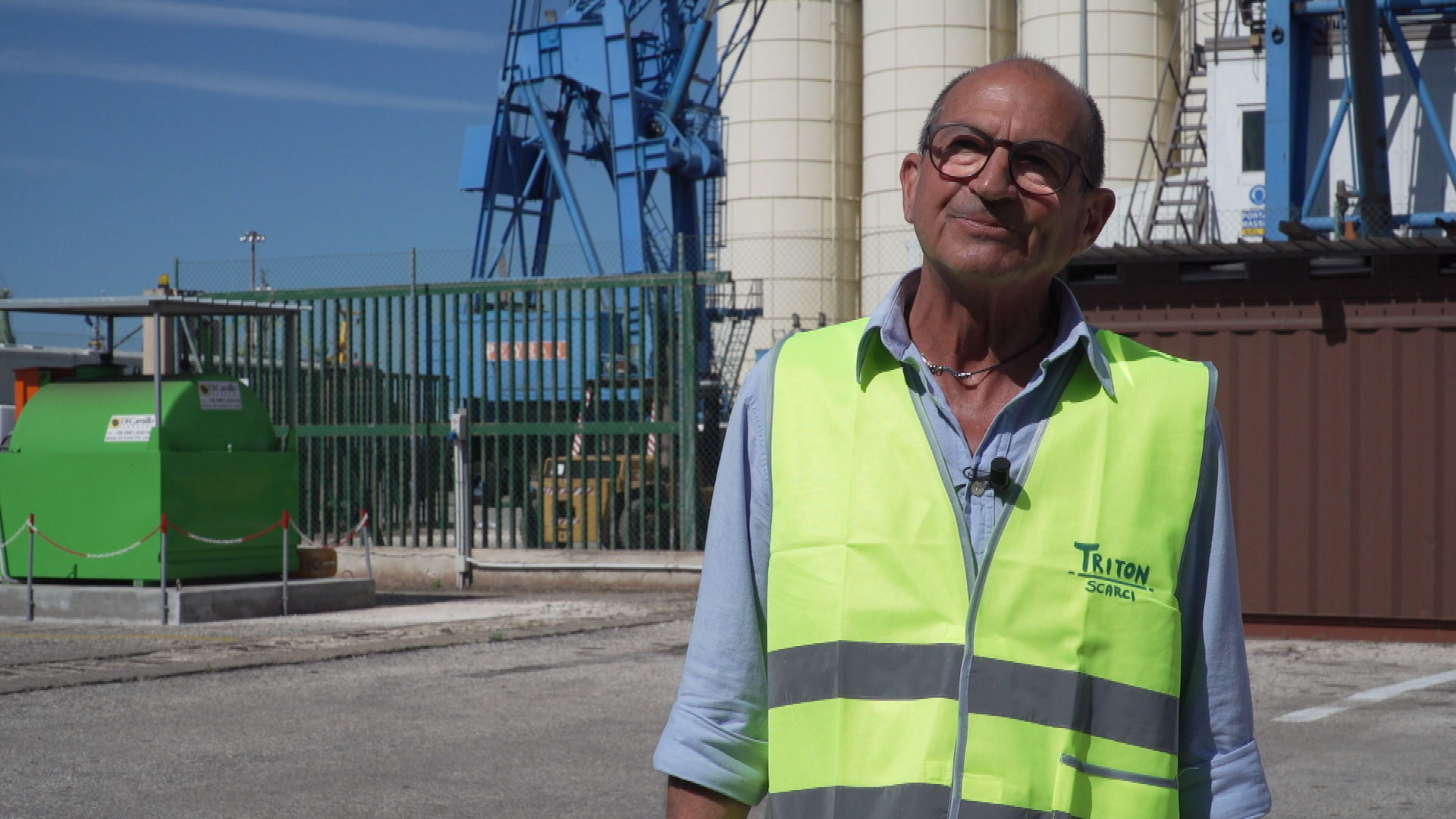Operatori sicurezza interview
Securing loads: lashing, blocking and de-securing
My name is Scarci Alfredo, I represent the port company Triton.
We mainly deal with loading, unloading and securing cargo, mainly for materials from the Arcelor Mittal plant, in the sense that we load and unload finished materials, i.e. coils, sheet metal, pipes, everything that Arcelor Mittal produces and we also handle the securing of loads, i.e. lashing, blocking and de-securing.
Terminology that somehow means making ships travel safely.
The lashing and blocking would be activities that we carry out inside the holds and it means blocking all the cargo that has been loaded.
So in the case of coils, which are those huge metal coils that can have an average weight of 15 to 30-35 tonnes each, we block them by strapping them together so that there is no heeling of the cargo during navigation and therefore no danger from navigation.
And in addition the blocking would be blocking the whole load of sheet metal with pieces of wood interspersed between the sheets, or between the sheet metal and the ship’s bulkheads so that they too remain firmly in place within the ship’s hold and can ensure a smooth continuation of the voyage.
Loading and unloading of foodstuffs
We take care of all the purely port activities, we have also been involved for a long time in unloading foodstuffs, specifically frozen tuna or frozen fish or even bananas or other types of fruit that were then sold in the big markets.
These ships had three loading points within the globe, one of which was in the Seychelles, then there was the Indian Ocean and the Japanese coast.
We imported tuna from Japan for many years and contrary to that the Japanese, Who knows why, they preferred to buy Mediterranean tuna and bring it to Japan.
This was probably because the quality of Mediterranean fish was a little higher than what they could catch in the ocean. and this was done in big freezer ships, and then they would come here, and we would bring our staff and land the fish with special equipment, The fish was then put into lorries and the lorries then took it for processing.
Between 1995 and 2005, for at least ten years, we did this activity on a massive scale, unloading up to 50, 70, 80 thousand tonnes of frozen tuna per year, up to 20 to 25 thousand frozen fish.
Probably the first in Puglia and the first four ports in Italy for productivity was us, then there was Ragusa in Sicily, there was Cagliari in Sardinia and Civitavecchia, after that I don’t think anyone else was doing these activities.
We are waiting for a ship that should arrive around 20-21 this month so that we can unload zinc and store it inside our shed and then distribute it at the request of the client.
There is the definition of how they are shaped, there is the weight, there is the type of zinc and the purity of the zinc itself.
Bear in mind that each of these weighs two tonnes.
Pallets and Containers simplify loading
Today, everything that can be palletised is palletised through containers.
Palletising means placing the load on a pallet, which represents the Euro-pallet one metre by one metre, i.e. up to a height of one metre eighty.
It is much more convenient to load and unload than to bulk.
And the container follows the same logic, the container is nothing more than a large container in which you stow as much material as you can, and then in one turn you take the container and place it on board the ship, and the whole operation is much simpler.
We have accepted this crane with a spreader that can handle both types, i.e. 20ft to 40ft containers.
It’s an extendable piece of equipment, as needed: it can pull, it can unload both types.
Port work, a legacy to be nurtured
My name is Mazzarò Donato and I work at Neptunia, in the port of Taranto.
I’m a crane operator, but not for a long time.
I come from a family of dockers and automatically, always being in this area, seeing them work I always liked to be able to manoeuvre them and now slowly, slowly we are starting to manoeuvre.
People who suffer from heights could never go, it takes a bit of guts because these are also a bit smaller, but there are the others who are very tall.
I am the son of one of the historic crane operators, from a historic company: the Neri company.
My father worked for many years on the cranes of the Neri company, after which I too made my career, so I was first employed by the port company, which no longer exists, in the sense that the laws have changed and the former port companies have had to transform themselves into either port cooperatives or port companies.
So I came from the port company, I was vice consul for many years.
The vice-consul was in charge of the operational staff, and then fortunately – because it’s lucky – I retired in 2010 and the company that took over from the port company thought they could keep me in business, so I am still working with the Triton company and I am very proud and honoured.
*** Automatically generated subtitles ***


